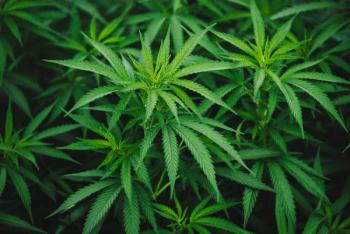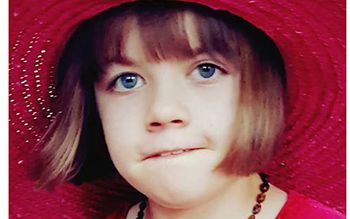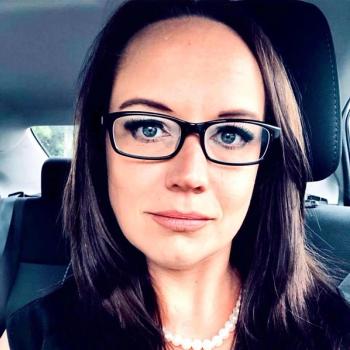
- August 2021
- Volume 2
- Issue 2
Medical Cannabis and Caregiver Rights in Hawaii
At a young age, Jari Sugano’s daughter, MJ, was diagnosed with Dravet syndrome. Standard pharmaceuticals didn’t help in alleviating her daughter's seizures. Here, Sugano talks about how medical cannabis has helped MJ and the importance of the caregiver role.
When Jari Sugano’s daughter, MJ, was diagnosed with Dravet syndrome at the age of 6 months, she tried to follow a traditional medicine form of treatment. Through trial and error of countless anti-seizure medications and hyperactivity medications, nothing seemed to be working for MJ. She also underwent the ketogenic diet twice under the care of a licensed nurse/dietician and received neurology help from children’s hospitals in Honolulu, Chicago, and Miami. Jari’s last hope was to attempt using cannabis as a medical treatment to try to prevent MJ’s seizures. By this time, Jari’s daughter was 4 years old (1). Nothing was working and they began to see MJ slipping away from them. Cannabis had to be the right choice moving forward. From other parents with children diagnosed with Dravet syndrome, Jari learned about how cannabis was helping them and decided then that cannabis needed to be added to her daughters’ regimen.
It was not an easy venture digging into the medical cannabis industry. Jari had to self-teach herself about using cannabis as a treatment plan for her daughter and what products to use. “When we first started evaluating cannabis as an alternative treatment for epilepsy, there were no testing labs, dispensaries, or educational programs on cannabis. There were few support groups for cannabis patients in Hawaii,” she said. “With a background in agriculture, I was able to grow cannabis plants fairly easily. But, I had no way to reliably test the final product. In the early years I used color spectrum test strips for CBD and met a woman who had a thin layer chromatography machine in her living room. I traveled to Colorado a few times and learned all I could about this medicinal plant. Testing made all the difference in providing consistent medication to my daughter.”
When MJ first began using medical cannabis, the mortality rate of children with Dravet syndrome was extremely high. Many children unfortunately, did not survive past the age of 5. Jari’s pursuance of using cannabis as a treatment plan for her daughter was a big risk to take and graciously, it worked. Prior to cannabis, MJ would seize multiple times each day. Jari stated that cannabis provided MJ with relief and when the seizures stopped, her daughter was finally able to heal and recover. “We were pioneers in adding cannabis to MJ’s epilepsy regime. Doctors were supportive, but many did not receive official training in cannabis dosing and pharmacology, so they couldn’t guide us at the time. We followed the research studies conducted by companies such as the producers of Charlotte’s Web and watched for drug interactions through blood testing. Cannabis dosing was not conducted at the same time as epilepsy medications to avoid unnecessary drug interactions,” Jari added.
As her caregiver, Jari needs to monitor MJ under 24/7 supervision due to her hyperactivity. “From the time she gets up to the time she sleeps, all eyes must be on her to avoid self-injury and harm. Her resiliency is what drives her. Since her daily care requires much time and effort, we only grow a few plants at home. We have the support of other cannabis patients who help us make MJ’s oil these days,” said Jari. “From using THC/CBD daily, MJ now uses her oil as a rescue medication.”
It hasn’t always been easy to get the medicinal plant that her daughter needs though. “Access to quality medical cannabis has always been a challenge in Hawaii since 2000. Dispensaries were established to provide patients with access to cannabis, especially those who couldn’t grow their own medicine. However, new laws prohibit patients from exchanging products and limits caregivers’ rights,” Jari said.
Retaining caregiver rights is a very important topic for her. It is something that Jari will continuously advocate for, not just for her daughter but for all cannabis patients as well. In Hawaii, not all patients have the option to grow their own medicine or they can't afford dispensary products that can help them with treating their medical conditions.
When MJ first started to use medical cannabis, there was not much legislation supporting it. In 2000, Hawaiian Governor Ben Cayetano signed Act 228 into law which allowed medical cannabis cardholders to grow their own cannabis or be able to appoint a caretaker who would grow for them. Hawaii became the 8thstate to legalize medical cannabis and was the first to do this via an act of state legislature. Although Act 228 helped provide some access to medical cannabis, it did not establish a legal market or dispensaries. In July 2015, Act 241 was passed. This legislation stated that the Hawaii Department of Health could administer the Medical Marijuana Dispensary Program by 2016 and also allow dispensaries to begin to dispense medical and manufactured marijuana products once the Department of Health granted them approval (2). Since Act 241’s passing, new state and private educational programs have launched that help medical cannabis patients get the support they need.
Since 2000, epilepsy has been listed as a qualifying condition in Hawaii. Despite this approved use, there is still judgement around the plant. Jari has seen negative stigma and inadequate education affect the evaluation and adoption of cannabis by many patients. Doctors are also not trained to offer patients cannabis as a treatment option. Despite this, Jari believes that more and more people will seek out cannabis as an alternative and primary treatment option for epilepsy and other health ailments. As a parent treating their child with medical cannabis, Jari faces stigma for seeking out this treatment option. “Despite the law allowing for the use of cannabis in children with epilepsy, it was very difficult to find a physician to certify my daughter back in 2013. I wish I was able to start her on cannabis earlier, but there were so many obstacles. Coming from a drug-free background, I admit I took some time to ‘dig deep and decide’ if cannabis was right for her. In the end, MJ was in the fight for her life, and her care superseded any negative stereotyping,” Jari stated.
The future of cannabis gets brighter as more and more people begin to see the benefits of the medicinal plant and help change the stigma that surrounds it. Jari hopes that patients will continue to be able to retain their right to grow, exchange, test, and caregive for others in need. Dispensaries that have opened in their state were not put in place to take away a patients’ right to grow for themselves, but were established to help those who were unable to grow for themselves. “As access increases, I hope those in need obtain the medicine they need to live a quality life. For MJ, access to quality cannabis products has allowed her to beat the odds and thrive. It’s our kuleana to advocate for cannabis rights,” said Jari.
Kuleana is a Hawaiian value and practice which loosely translates to mean "responsibility." Indeed, it is our kuleana to fight for the research and patient education to further this medicinal plant's use.
References
Articles in this issue
over 4 years ago
August 2021 Digital Editionover 4 years ago
Charlotte Figi: Patient, Advocate, Trailblazer, and Much Moreover 4 years ago
Cannabis Becomes One Nurse’s Tool to Treat Epilepsy DisordersNewsletter
Unlock the latest breakthroughs in cannabis science—subscribe now to get expert insights, research, and industry updates delivered to your inbox.


